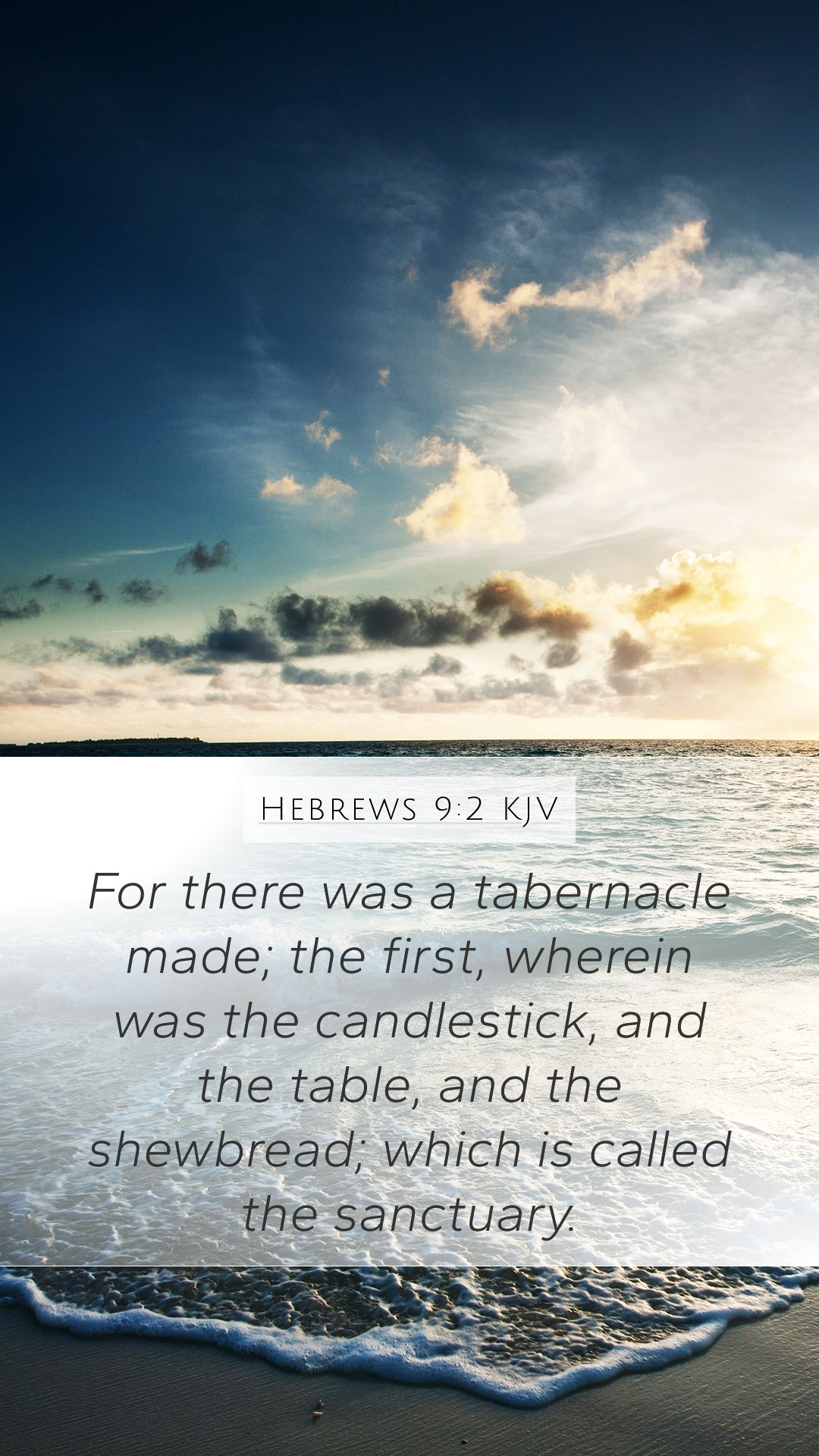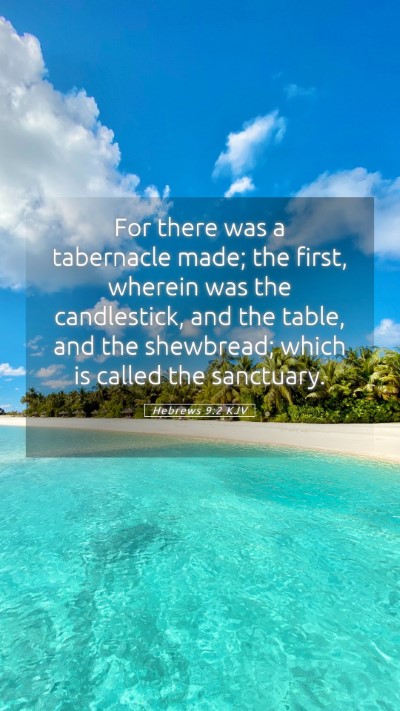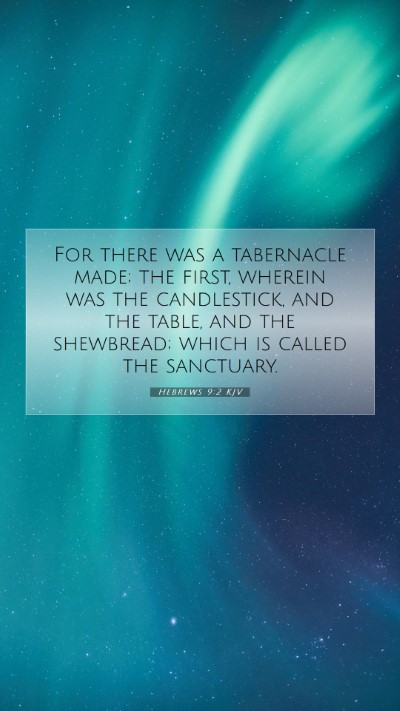Understanding Hebrews 9:2
Verse: Hebrews 9:2 states, "For there was a tabernacle made; the first, wherein was the candlestick, and the table, and the shewbread; which is called the sanctuary."
This verse serves as a foundational introduction to the description of the Jewish tabernacle, reflecting the importance of understanding its significance in the context of biblical worship and the foreshadowing of Christ’s work.
Bible Verse Interpretations and Commentary
In analyzing Hebrews 9:2, several key biblical commentators provide insights, including Matthew Henry, Albert Barnes, and Adam Clarke, who together illuminate the meaning of this passage:
-
Matthew Henry:
Henry emphasizes the ceremonial system established in the tabernacle. He views the tabernacle as a shadow of heavenly realities, illustrating God's divine order and the means through which sinners could approach Him. The arrangement of the candlestick, the table of shewbread, and the altar of incense signifies the varied ways God's presence was symbolically represented.
-
Albert Barnes:
Barnes elaborates on the furnishings of the tabernacle, noting that they all played specific roles in the worship according to the Law. The candlestick represents light and guidance, while the table of shewbread symbolizes God’s provision. Barnes highlights how these elements foreshadow the greater realities fulfilled in Christ.
-
Adam Clarke:
Clarke digs into the historical context, reflecting on the construction of the tabernacle as instructed in the Old Testament. He points out that the "sanctuary" represents a sacred space where God meets His people, conveying an overarching theme of redemption. Clarke also notes the symbolism associated with each item mentioned, urging readers to see the connections between the Old Testament rituals and New Testament realities.
Meaning and Significance of Hebrews 9:2
The interpretation of Hebrews 9:2 not only reflects on the physical structure of the tabernacle but also signifies deeper spiritual truths:
-
1. Divine Presence:
Hebrews 9:2 emphasizes the concept of God's presence among His people, and the tabernacle serves as a meeting place where humanity could experience divine communion.
-
2. Foreshadowing of Christ:
Each element of the tabernacle symbolically points to Jesus Christ's ultimate sacrifice and the New Covenant that would replace the Old Covenant sacrificial system.
-
3. Symbolic Representation:
The items mentioned (the candlestick, table, and shewbread) illustrate various attributes of God—His light, providence, and sustenance.
Scripture Analysis and Cross References
Examining Hebrews 9:2 within the broader biblical narrative, we find several cross-references that deepen our understanding:
- Exodus 25:31-40: Details the construction and purpose of the candlestick in the tabernacle.
- Leviticus 24:5-9: Discusses the arrangement of the showbread on the table.
- Hebrews 8:5: Highlights the significance of the tabernacle being a "copy and shadow" of what is in heaven.
Application in Bible Study
This verse invites readers to explore several critical applications for their Bible study:
- Bible Study Insights: Consider the roles of symbolic elements and how they relate to daily spiritual life.
- Historical Context: Investigate the backdrop of the Old Testament tabernacle and its relevance today.
- Application: Reflect on how the elements of the tabernacle serve as reminders of God's presence and provision.
Conclusion
Hebrews 9:2 not only serves as a reference point to understand the Old Testament tabernacle but also points to the rich depth of how Old Covenant practices inform the New Covenant fulfilled in Christ. This passage encourages a deeper exploration of Scripture for all who search for Bible verse meanings, interpretations, and practical applications.


